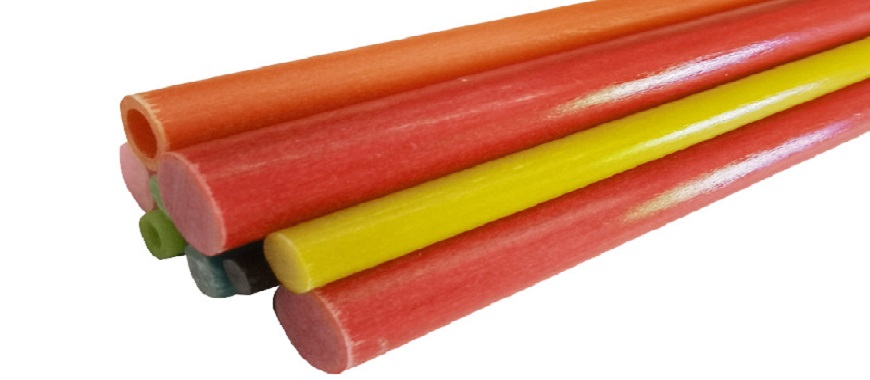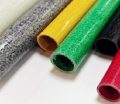
Sanding fiberglass tubs is a crucial step in restoring their appearance and ensuring a long-lasting finish. If your fiberglass tub has accumulated scratches, discoloration, or other imperfections, learning how to sand fiberglass tub correctly can help you achieve a smooth, even surface. Start by using the appropriate grit sandpaper, typically beginning with 220-grit for rough spots and progressing to finer grits like 400-600 for a polished finish. Make sure to sand in circular motions to avoid leaving visible marks. After sanding, it’s important to clean the surface thoroughly to remove any dust and residue. You can then apply a new gel coat or refinishing material to complete the restoration. Sand fiberglass tub carefully to avoid damaging the surface and to achieve the best possible results.
What Is the Process for Sand Fiberglass Tub Maintenance
The sand fiberglass tub is an essential component in many residential, marine, and industrial settings, prized for its durability, versatility, and aesthetic appeal. Proper maintenance is critical to ensuring its longevity and visual quality, and sanding plays a pivotal role in achieving this. Whether you need to remove old finishes, repair imperfections, or prepare the surface for painting, sanding transforms the sand fiberglass tub into a flawless, polished masterpiece.
Fiberglass is a material known for its strength and resilience, but over time, scratches, cracks, or discoloration may appear due to regular use or environmental exposure. Sanding effectively addresses these issues by removing damaged layers and restoring the tub’s smooth surface. The process involves a sequence of steps, including the use of various sandpaper grits, from coarse to fine, to achieve the desired finish. With the right tools and techniques, a sand fiberglass tub can maintain its structural integrity and appearance for years.
Sanding is not just about restoring aesthetics; it is also an essential step in preparing the tub for repairs or refinishing. A properly sanded surface ensures that any subsequent layers of paint, sealant, or glaze adhere securely, resulting in a seamless and professional finish. The sand fiberglass tub’s gel-coated surface responds particularly well to this process, making it easy to achieve a polished, glossy appearance.
Benefits of Sanding the Sand Fiberglass Tub
- Removes Old Finishes and Imperfections:
Sanding effectively strips away old coatings, scratches, and blemishes, providing a clean slate for refinishing or painting. This step is crucial for restoring the tub’s original smoothness and ensuring a consistent appearance. - Prepares for Repairs:
When repairing cracks or deep scratches, sanding creates a smooth base that ensures proper adhesion of fiberglass repair kits. This improves the durability and longevity of the repairs. - Enhances Aesthetic Appeal:
A well-sanded sand fiberglass tub looks polished and professional, making it an attractive feature in any setting. The process removes surface irregularities and discoloration, leaving the tub with a smooth, shiny finish. - Prolongs Lifespan:
Regular sanding prevents minor imperfections from developing into larger issues. By addressing these problems early, the tub’s overall durability and functionality are preserved. - Reduces Safety Risks:
Sanding smooths out rough edges or sharp surfaces, minimizing the risk of injury during use. This makes the sand fiberglass tub safer for household or industrial applications.
Sanding Techniques for Sand Fiberglass Tub
Sanding a sand fiberglass tub requires precision and the right tools to achieve the best results. Following a step-by-step approach ensures a smooth and polished surface while avoiding potential damage.
Begin with coarse-grit sandpaper, typically ranging from 80 to 100 grit, to remove scratches, imperfections, or old finishes. Use consistent, circular, or back-and-forth motions to sand the entire surface of the tub. Take care to not press too hard, as excessive pressure can cause uneven surfaces or gouges.
Once the rough spots have been addressed, switch to finer sandpaper, such as 220 to 400 grit, to smooth the surface further. This step eliminates any remaining scratches and prepares the surface for polishing. For the final stage, use very fine grit sandpaper, such as 600 to 1000 grit, to achieve a glossy and polished appearance. Wet sanding is recommended at this stage to reduce dust and ensure a smoother finish.
Throughout the process, it is essential to clean the tub regularly to remove sanding residue and inspect the surface for any missed imperfections. Using a sanding block or pad helps maintain even pressure and prevents uneven marks. By following these techniques, the sand fiberglass tub can be restored to its original beauty and functionality.
While sanding addresses minor surface issues, deeper imperfections such as cracks or gouges require additional steps for repair. Fiberglass glazing putty is an effective solution for filling these areas before sanding.
Begin by cleaning the damaged area thoroughly to remove dirt and debris. Apply the glazing putty using a putty knife, ensuring that the material fills the crack or scratch completely. Allow the putty to cure according to the manufacturer’s instructions.
Once the putty has hardened, sand the repaired area with coarse-grit sandpaper to level the surface. Gradually progress to finer grits to blend the repair seamlessly with the rest of the tub. After sanding, polishing compounds can be applied to restore the tub’s shine and ensure a flawless finish.
Consistency is key during this process. Each step, from applying putty to sanding and polishing, must be performed with care to avoid creating new imperfections. The sand fiberglass tub responds well to these techniques, making it easy to achieve a durable and aesthetically pleasing repair.
Tips for Effective Sanding and Avoiding Common Mistakes
- Avoid Over-Sanding:
Applying too much pressure or sanding for too long in one area can damage the fiberglass surface. Use light, even strokes to prevent gouges or uneven marks. - Use Proper Tools:
A sanding block or pad ensures even pressure distribution, reducing the risk of creating uneven surfaces. It also makes the process more efficient and comfortable. - Wet Sand for Best Results:
Wet sanding minimizes dust and prevents the sandpaper from clogging. It also reduces the risk of overheating the fiberglass, which can cause discoloration or warping. - Inspect Regularly:
Periodically check the tub for deeper imperfections that may require additional repairs. Early detection and treatment prevent minor issues from escalating into significant problems. - Choose the Right Sandpaper Grit:
Starting with a coarse grit and gradually progressing to finer grits ensures a polished and professional finish. Using the wrong grit can lead to unsatisfactory results and require additional work.
Real-World Applications of Sand Fiberglass Tub Maintenance
- Home Renovations:
A homeowner restores a worn fiberglass bathtub by sanding and refinishing it. The process eliminates scratches and discoloration, resulting in a polished, modern appearance that enhances the bathroom’s overall aesthetic. - Marine Repairs:
A boat owner sands a fiberglass hull to remove damage caused by rough waters. Proper sanding improves the vessel’s hydrodynamics, enhancing performance and reducing fuel consumption. - Automotive Refinishing:
An automotive enthusiast restores fiberglass body panels on a car by sanding and repainting them. The process ensures a smooth surface and a professional-grade finish that enhances the vehicle’s value. - Industrial Maintenance:
Fiberglass components in machinery are regularly sanded to remove wear and tear. This maintenance extends the lifespan of the equipment and ensures reliable operation in demanding environments. - Creative DIY Projects:
A DIY hobbyist transforms a sand fiberglass tub into a decorative piece of furniture. Sanding provides a smooth, polished finish that enhances the final product’s appearance and usability.
The sand fiberglass tub is a durable and versatile material that responds well to proper sanding techniques. By maintaining its surface and addressing imperfections promptly, users can ensure that the tub remains functional and visually appealing for years to come. At GangLong Fiberglass, we specialize in providing high-quality fiberglass products and expert advice to help you achieve the best results for your projects. The sand fiberglass tub is an investment in durability, style, and performance, making it a valuable addition to any setting.
Preventing Zippered Fiberglass Body Tube Damage in Rocketry
What Are the Steps to Maintain a Sand Fiberglass Tub
The sand fiberglass tub is a versatile and durable product used across various applications, including residential, industrial, and marine settings. Proper maintenance is crucial to ensure its longevity and functionality. One of the most effective ways to maintain a sand fiberglass tub is through sanding, which restores its smooth surface, prepares it for repairs, and enhances its visual appeal. By following a structured approach, sanding helps maintain the tub’s aesthetic and structural qualities for years to come.
Fiberglass tubs are known for their resilience, but over time, they may develop imperfections such as scratches, chips, or discoloration. These flaws can be effectively addressed with the right sanding techniques. Sanding removes old finishes, eliminates surface blemishes, and prepares the tub for further treatment, such as painting or sealing. The sand fiberglass tub’s gel-coated surface is particularly well-suited for sanding, allowing for a polished and professional result.
Preparing the Fiberglass Tub for Sanding
Proper preparation is the foundation of effective sanding. Before starting, the sand fiberglass tub must be thoroughly cleaned to remove dirt, oils, and manufacturing residues. A wax and grease remover or acetone is ideal for this step, ensuring that no contaminants interfere with the sanding process.
After cleaning, inspect the tub for cracks, deep scratches, or other damage. Use a utility knife to trim any rough edges or raised areas. This step prevents these imperfections from affecting the sanding process and ensures a smoother finish. Finally, mask off any areas you want to protect from sanding, such as edges, fixtures, or regions that do not require treatment. This careful preparation ensures the tub is ready for sanding without unnecessary risks.
Sanding a sand fiberglass tub requires a methodical approach to achieve the desired finish. Start with coarse-grit sandpaper, typically 80 to 100 grit, to remove significant imperfections or old finishes. Use long, even strokes and either a circular or back-and-forth motion to cover the entire surface evenly. Avoid pressing too hard, as excessive pressure can lead to uneven surfaces or gouges.
Once the major imperfections are addressed, switch to finer sandpaper, such as 220 to 400 grit. This step smooths the surface further and prepares it for polishing. Finally, use very fine grit sandpaper, ranging from 600 to 1000, to achieve a polished and glossy finish. Wet sanding at this stage reduces dust buildup, prevents overheating, and ensures a smoother result.
Regularly clean the surface during sanding to remove debris and inspect your progress. Using a sanding block or pad can help maintain even pressure, ensuring consistent results. By following these techniques, the sand fiberglass tub can be restored to its original smoothness and shine.
Benefits of Sanding the Sand Fiberglass Tub
- Removes Old Finishes and Imperfections:
Sanding eliminates scratches, chips, and old coatings, providing a clean slate for further treatments or repairs. This process ensures that the tub maintains its visual and functional integrity. - Prepares for Repairs and Refinishing:
A properly sanded surface ensures that fiberglass repair kits, paint, or sealants adhere securely. This preparation step enhances the durability and longevity of the tub. - Improves Aesthetic Appeal:
Sanding enhances the tub’s appearance by removing discoloration and creating a polished surface. A well-sanded tub looks new and professional, making it an attractive feature in any setting. - Extends Lifespan:
Regular sanding prevents small imperfections from becoming significant issues, prolonging the tub’s life. Early maintenance reduces the need for costly repairs or replacements. - Enhances Safety:
Smoothing rough edges and sharp surfaces reduces the risk of injury. A well-sanded sand fiberglass tub is safer to use in residential, industrial, or marine environments.
Why Fiberglass Shaft Tubes Are Ideal for Marine Use
Repairing Imperfections about Sand Fiberglass Tub
The sand fiberglass tub often requires more than just surface sanding to address deeper imperfections. Cracks, deep scratches, or gouges should be repaired with fiberglass glazing putty before sanding.
Begin by cleaning the damaged area thoroughly to remove any contaminants. Apply the glazing putty with a putty knife, ensuring that it fills the crack or scratch completely. Allow the putty to cure according to the manufacturer’s instructions.
Once cured, sand the repaired area with coarse-grit sandpaper to level the surface. Gradually progress to finer grits to blend the repair seamlessly with the rest of the tub. After sanding, polishing compounds can be applied to restore the tub’s shine and achieve a flawless finish. This systematic approach ensures that the sand fiberglass tub retains its structural integrity and visual appeal.
Tips for Effective Sanding and Avoiding Mistakes
- Use Appropriate Sandpaper:
Start with coarse grit for significant imperfections and transition to finer grits for a polished finish. Skipping grits or using the wrong type can result in unsatisfactory outcomes. - Avoid Over-Sanding:
Excessive pressure or prolonged sanding in one area can damage the fiberglass surface, creating gouges or weakening the material. Use light, consistent strokes for the best results. - Wet Sand for Best Results:
Wet sanding minimizes dust and reduces the risk of overheating. It also helps achieve a smoother finish by preventing sandpaper from clogging. - Inspect the Surface Regularly:
Periodically check the tub for missed imperfections or areas requiring additional attention. Early detection prevents minor flaws from developing into larger problems. - Use a Sanding Block or Pad:
These tools help maintain even pressure, preventing uneven marks and ensuring a uniform surface. They also make the sanding process more efficient and comfortable.
Real-World Applications of the Sand Fiberglass Tub
- Home Renovations:
A homeowner restores a fiberglass bathtub by sanding and refinishing it. The process eliminates surface imperfections, resulting in a modern, polished appearance that enhances the bathroom’s aesthetic. - Marine Maintenance:
A boat owner sands and polishes the fiberglass hull to remove damage caused by rough waters. This improves the vessel’s hydrodynamics and extends its lifespan by protecting it from further wear. - Automotive Refinishing:
A car enthusiast uses sanding techniques to restore fiberglass body panels, ensuring a smooth surface for painting. This approach results in a professional-grade finish that enhances the vehicle’s overall value. - Industrial Repairs:
Fiberglass components in machinery and equipment are regularly sanded to maintain their performance and durability. Sanding prevents wear and ensures reliable operation in demanding industrial environments. - Creative DIY Projects:
A DIY hobbyist transforms a sand fiberglass tub into custom furniture by sanding it to perfection. The polished finish enhances the final product’s appearance and usability, making it a unique and attractive addition to any space.
The sand fiberglass tub is a durable and adaptable material that benefits greatly from proper sanding and maintenance. By addressing imperfections and preparing the surface for refinishing, sanding ensures that the tub remains functional and visually appealing for years to come. At GangLong Fiberglass, we provide high-quality fiberglass products and expert advice to help you achieve exceptional results. Whether for residential use, industrial applications, or creative projects, the sand fiberglass tub is a valuable investment in durability, style, and performance.
Fiberglass Wicks and Glass Tubes for Oil Lamps
FAQs about Sand Fiberglass Tub
Yes, sanding fiberglass is perfectly fine, but it should be done with caution. Sanding is a necessary step for refinishing, repairing damage, or prepping a surface for new coatings. When sanding fiberglass, it’s important to use the proper grit sandpaper to prevent gouging or damaging the material. Start with a coarser grit to remove deeper scratches or imperfections, and finish with a finer grit to achieve a smooth, glossy finish. Keep in mind that fiberglass dust can be hazardous to your health, so always wear a dust mask, gloves, and eye protection during the process. Additionally, ensure you’re sanding in a well-ventilated area to avoid inhaling harmful dust particles.
The waiting time before sanding fiberglass depends on the specific project you’re working on. If you’re working with a newly installed fiberglass tub or shower, you should wait at least 24 to 48 hours for the material to fully cure before sanding. For fiberglass that’s been repaired or refinished, ensure the surface is completely dry before starting. In some cases, especially with gel coats, it may take up to a week for the material to fully set and cure. Always check the manufacturer’s instructions for curing times to ensure the surface is ready for sanding without causing damage.
Sanding a fiberglass shower is similar to sanding a fiberglass bathtub. First, clean the surface thoroughly to remove any soap scum, dirt, or oils that could interfere with the sanding process. Use a medium-grit sandpaper (around 120-grit) to remove any imperfections or scratches. For smoother surfaces, switch to a finer grit (220 to 400-grit) to finish the job and achieve a polished, glossy appearance. Be sure to sand gently and evenly to avoid damaging the surface. Wet sanding is often recommended for fiberglass showers, as it reduces the risk of sanding too aggressively and minimizes the creation of dust. Once the sanding is done, rinse the area thoroughly to remove any residue before applying a new coating or sealant.

As the editor of GangLong Fiberglass, I have years of experience and in-depth research, focusing on cable tray products, fiberglass solutions, and grille systems. I incorporate years of industry insights and practical experience into every content, committed to promoting the progress of the industry. At GangLong Fiberglass, my commitment is reflected in every product, from innovative cable trays to durable fiberglass solutions and sturdy grille systems. As an authoritative voice in the industry, my goal is to provide valuable information to professionals and businesses and promote forward-looking solutions.


